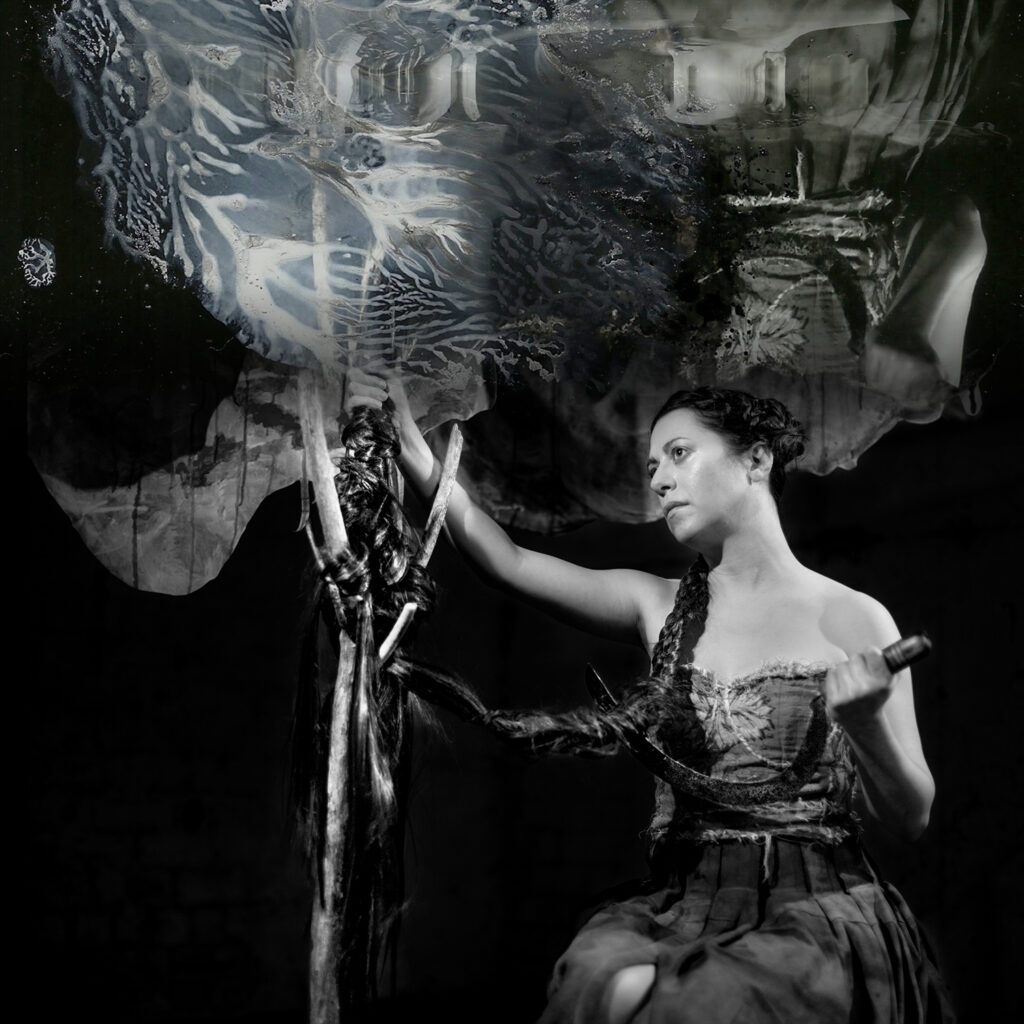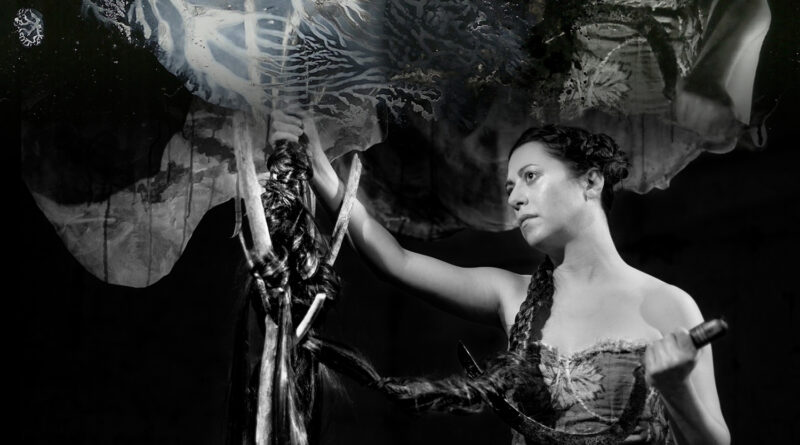ALBUM REVIEW: The Distaff – Maud The Moth
The brainchild of Amaya Lopez-Carromero, MAUD THE MOTH has developed and experimented over the past decade with a piano-driven sound inspired by folk, jazz, post-rock and doom in various measures. Her fourth album, The Distaff, is her darkest and most ethereal work yet, by turns atmospheric, introspective and heavy. Based in Scotland but born and raised in Spain, Lopez-Carromero has channelled her experiences and trauma through the gauzy filters of memory and imagination into a highly evocative record. Having joined forces with Scott McLean of black metallers ASHENSPIRE on the dark noise-rock of HEALTHYLIVING, Lopez-Carromero recruits his services on guitar and behind the mixing desk for The Distaff.
The first two tracks form a statement of intent for this collaboration. Canto de Enramada opens the record with an intense, off-kilter vocal harmony line, made all the more so by the heavy layers of effects. It’s almost alien, leaving room for Lopez-Carromero to show off her extensive falsetto range. Crashes of distortion split with sparse piano lines herald the transition into A Temple by the River. It then parts into a languid pace of piano and vocals. Both instruments are afforded plenty of space to breathe, accented by occasional percussion or guitar. Its crushing ending sees the vocals remain heavily affected, the cry of “My body is not enough” set against multiple harmonic overdubs. It evokes the character of JOANNA NEWSOM, albeit significantly darker.
Much of the album feels deliberately blurred, fragmented, a collage of recollections packed with feeling but absent of grounded detail. It achieves this by keeping percussive structure to a minimum, leaving space for discordant harmonies and atonality to breathe. Exuviae is an excellent example of this – made up of fluttering piano and birdsong, spiked with the screech of scraping metal. The sparse arrangement demands rapt attention and lends a unique heaviness.
Burial Of The Patriarchs gives more of the same: playful piano now combined with soaring violin and spring-reverb guitars, meandering its way patiently through dark melodic progressions. Everything on The Distaff was written initially for piano and vocals, ensuring each track holds its weight as a piece of songwriting before elevating it with additional instrumentation and mixing. The later track Fiat Lux is a good example, with McLean contributing some saxophone to vary the palette.
First single Siphonophores begins more conventionally. Descending piano arpeggiations and a single bass drum combine with a winding, unaffected vocal line to set the scene. The vocals then give way to a ringing, looping scorch of feedback, at once atonal yet harmonically consistent. The effect would be almost psychedelic if not for the grounding of the piano. It lends an intensity to the song, a sense of unease. It is perhaps a sonic manifestation of recalled trauma, or the alien-like quality of the jellyfish species its song title refers to. Whatever its intent, it has a serious impact.
The album’s centrepiece is second single, Despeñaperros, the song title referencing a gorge in southern Spain. Over ten minutes, it unfolds in mythical grandeur – from rapid piano arpeggiations into intense melodrama driven by strings and squealing guitar feedback. The drums adopt a conventional beat for the first time, set against more intense vocal overdubbed harmonies. Its anticipatory middle section uses a looping descending five-note piano pattern set awkwardly against a 12-beat rhythm. Guitars rattle amidst a rich sonic landscape, the vocal refrain of “away” repeated. Finally, a pause of more rapid piano work and operetta-like vocals lead back into the melodrama, Lopez-Carromero going all-in on the higher register wails. The whole piece is an absorbing evocation of the titular geography’s violent history.
The closing track, Kwisatz Haderach – a reference to the Dune books and the concept of genetic memory – breaks the tradition of the plain-mixed piano, saturating it with vast reverb to fill the mix. There is a sense of building in the atonal combinations of chimes and gong swells, reunited to common harmony by Lopez-Carromero‘s voice. Like much of the album, it has a dream-like quality: fuzzy memories in which the details remain abstract, but the emotions are overpowering.
For fans of bands that take an alternate approach to heaviness – the likes of EMMA RUTH RUNDLE, JO QUAIL and I HAXA – there is plenty here to enjoy and immerse yourself in. But MAUD THE MOTH have crafted something special with The Distaff. Its thematic content is rich – exploring trauma, memory and catharsis – and with each listen reveals further layers of intrigue and ideas. Its unexpected, sparse, yet heavy sonic craft is compelling, particularly in its rich falsetto harmonies. Yet the whole thing is escalated through intent. Its off-kilter and thunderous nature directly expresses the vivid and indistinct recollection of childhood. It makes for a compelling experience.
Rating: 8/10

The Distaff is set for release on February 21st via The Larvarium.
Like MAUD THE MOTH on Facebook.

